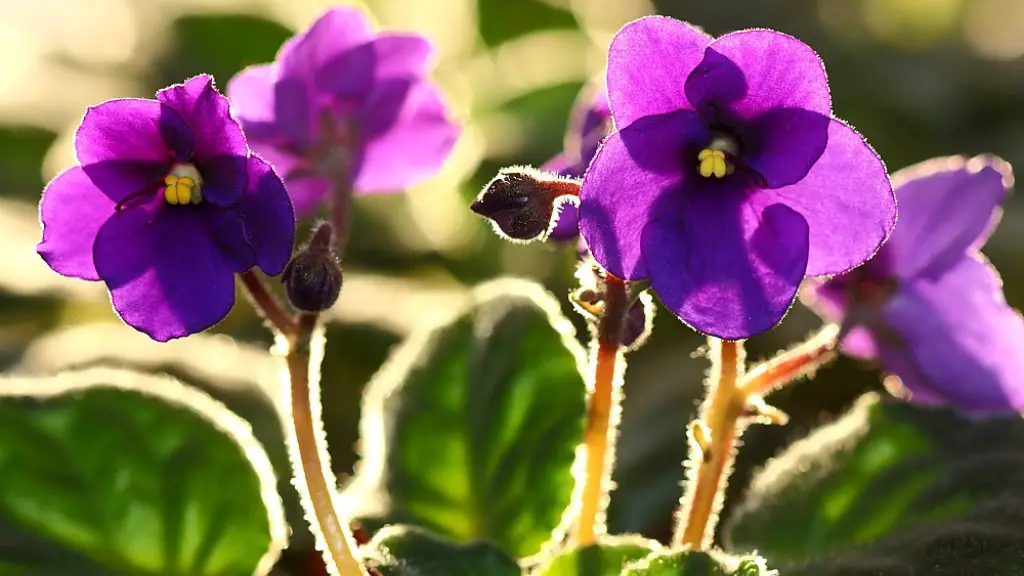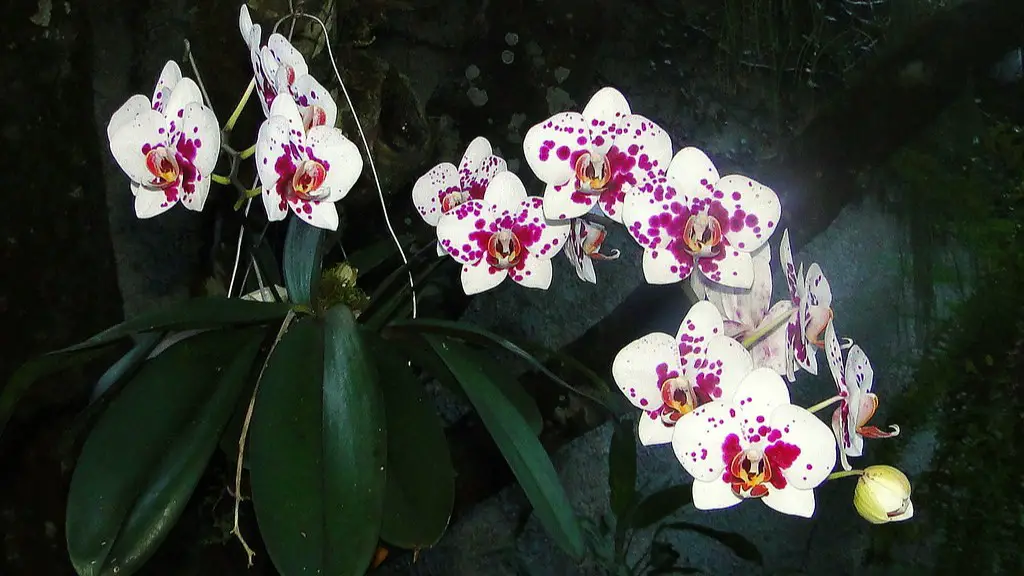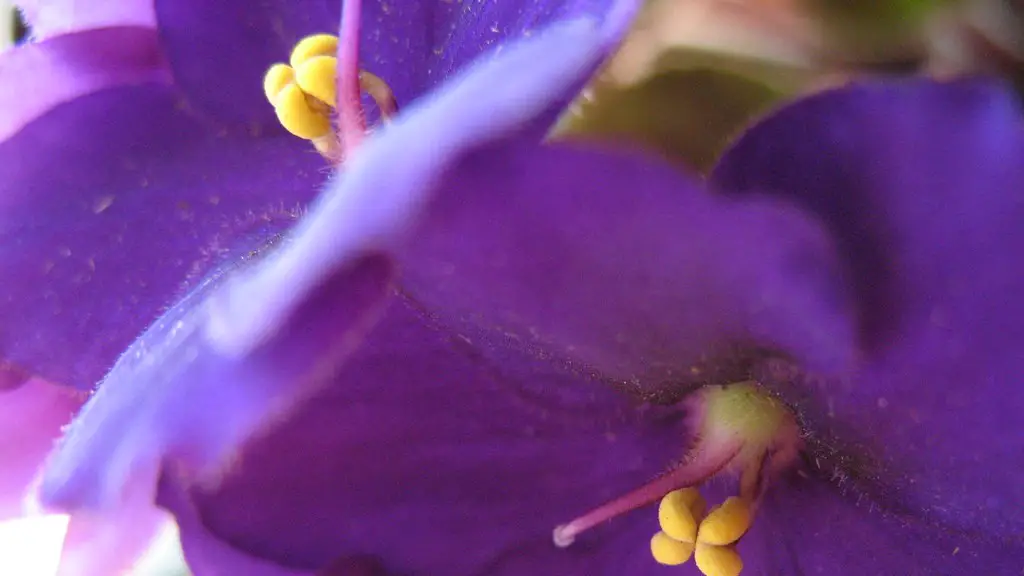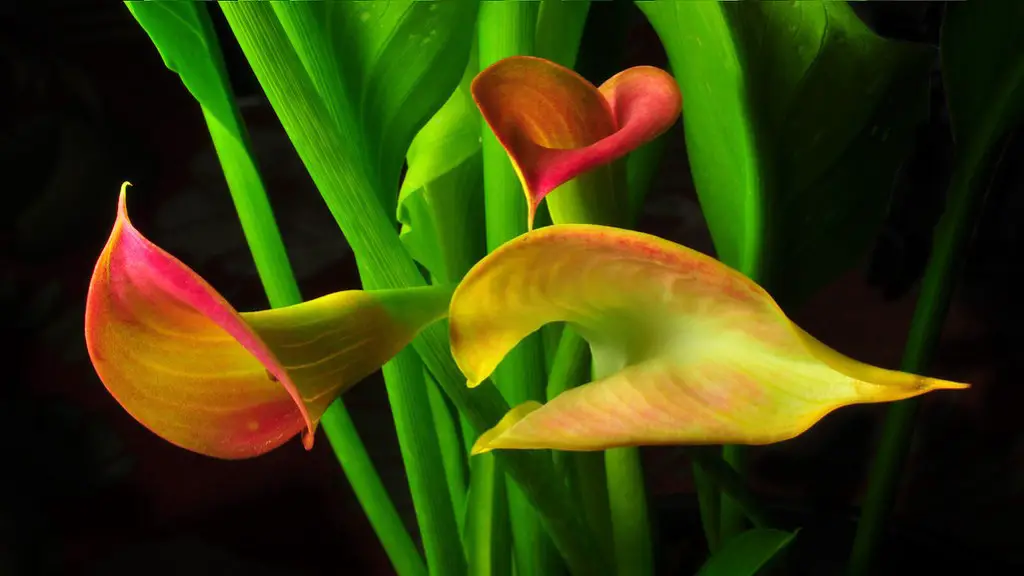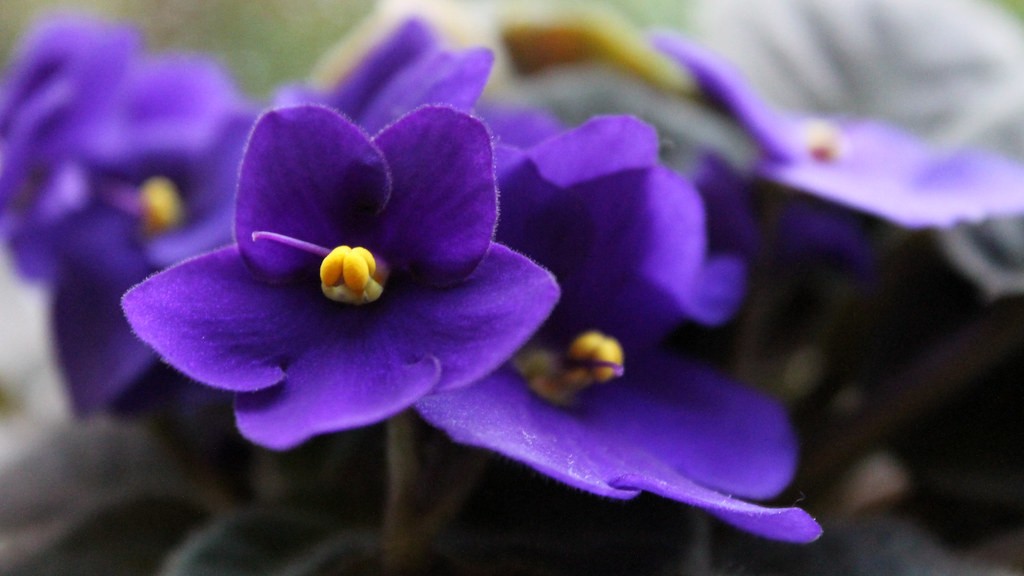African violets (Saintpaulia) are a popular houseplant, known for their ‘velvet’ looking leaves and beautiful flowers. They are native to Tanzania and Kenya, in Africa. Despite their name, African violets do not need full sunlight to thrive. In fact, they prefer bright, indirect light. African violets are relatively easy to care for, making them a great plant for beginners.
African violets need indirect sunlight or bright, artificial light. They will bloom best if they receive 12 hours of light each day.
Where is the best place to put an African violet?
If you want your plants to have vibrant color and blooms, grow them in bright, indirect light. The best location for this is three feet away from a west- or south-facing window. Plants will still grow when situated right beside north- or east-facing windows, but leaves will be thin and spindly, and plants less likely to bloom.
African violets need at least 8 hours of light per day and at least 8 hours of darkness per night to thrive. For long lasting blooms, 12 hours of natural sunlight per day is ideal. African violets need bright light during the day to encourage blooming.
Can African violets grow in low light
African violets grow well when they get ample indirect light. In too little light, they will have few or no flowers and will have leaves that become darker green and thin with long, weak stems. African violets are easily grown under artificial lights.
African violets are notoriously difficult to keep alive, but one way to help them thrive is by only watering them once a week. Allow the plant to completely dry out between waterings to prevent it from getting too much moisture. Setting up a wicking system can help make sure your violets never get over-watered.
Do African violets need bigger pots?
African violets do best when they are slightly pot-bound, so choose a pot that’s on the smaller side. A professional tip is to choose a pot that is about 3-4 inches in diameter if you have a standard African violet plant.
African violets are typically watered from the bottom, but either method is fine. It is important not to use cold water; lukewarm or warm is preferred. If you water from the top, be careful not to get water on the leaves when the plant is in the sun; this is to avoid leaf spots.
How do I keep my African violet blooming?
This plant prefers bright, indirect sun. Too little sunlight causes the plant to stretch for the light and produce few or no flowers; too much sun can burn the leaves. An east-facing window is ideal, especially with a sheer curtain to block the sun’s harshest rays. The plant also needs eight hours of darkness every night.
If you can barely see the shade of your hand over the Violet, then it is getting the correct amount of light. African Violets need plenty of indirect sunlight to thrive.
What is the best way to water African violets
The best way to water an African violet plant is to do it from the bottom up. Place your plant in a shallow tray of water for 30 minutes, allowing the soil to soak up the water through the drainage holes at the bottom of the pot. This will help keep your plant healthy and hydrated.
African violets typically need to be repotted every 1-2 years. The best time to repot your African violets is in the springtime.
Do African violets need shallow pots?
African violet roots like breathable, shallow pots. They don’t go very deep, but instead like to go sideways. So, make sure to use a pot with suitable drainage holes so you can water from underneath.
Assuming you would like tips for taking care of African violets:
Some tips for taking care of African violets include making sure they are in a pot with drainage holes, getting the right type of potting soil, and making sure they have the right amount of light and water. African violets also like moderate temperatures, so make sure to keep them away from drafts and heat sources. With a little care, you can keep your African violets healthy and happy for years to come!
Should African violets be misted
Water your African violet carefully to avoid leaf spots and crown rot. Use room-temperature water, and don’t mist the foliage. Water the soil around the plant instead.
If you’re not sure about the quality of your tap water, it’s best to err on the side of caution and use filtered or distilled water for your African violets. Chlorine, chloramines, and dissolved solids can all have negative effects on these delicate plants, so it’s best to avoid them if possible.
Can you spray water on African violets?
Cleaning the African Violet leaves is easy with the spray bottle method. Just fill the bottle with room temperature or tepid water and spray the leaves. Then use your fingers to rub the top and bottom part of the leaves. You can also use the spray bottle method to clean the African Violet leaves with liquid soap.
An African Violet should be repotted whenever the plant becomes rootbound, ie, the Violet has outgrown its current pot to the extent that its roots are growing out and around the rootball. This will ensure that the plant has enough room to grow and will also help to aerate the roots.
Conclusion
African violets need partial sunlight in order to bloom. If they are placed in direct sunlight, the leaves will burn.
No, African violets do not need full sunlight. They grow best in bright, indirect light.
